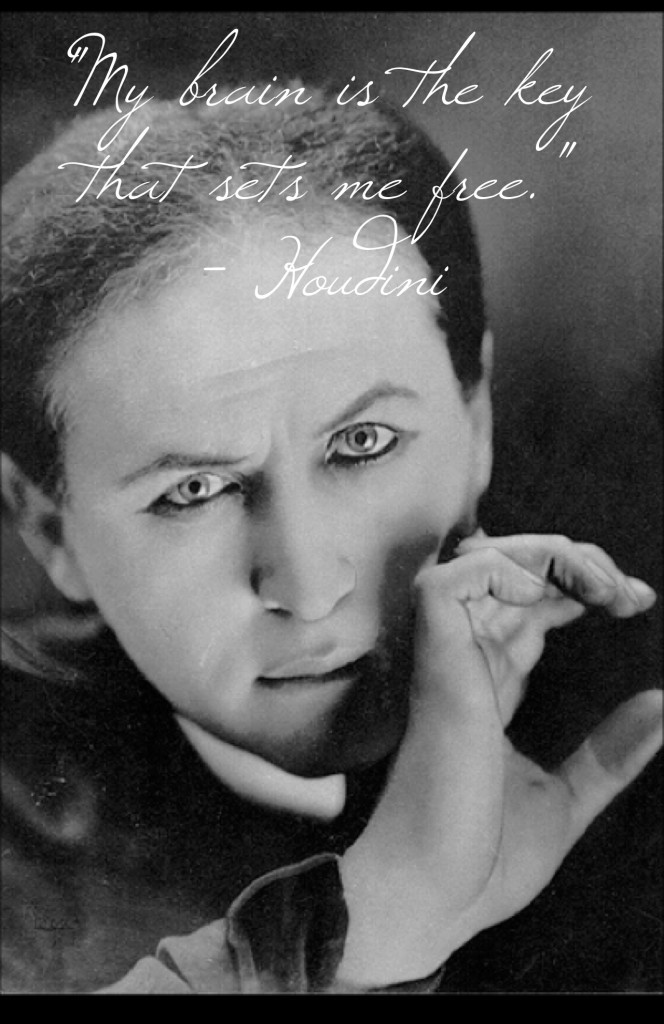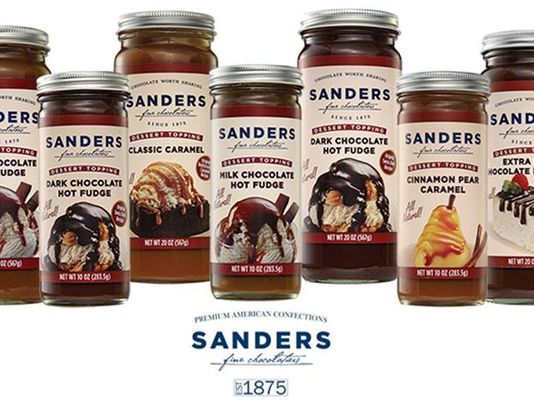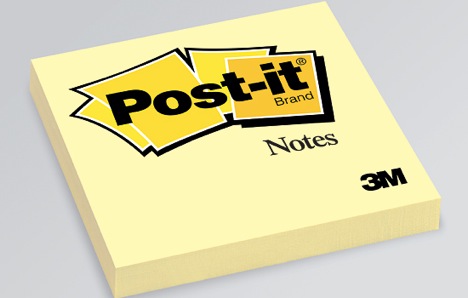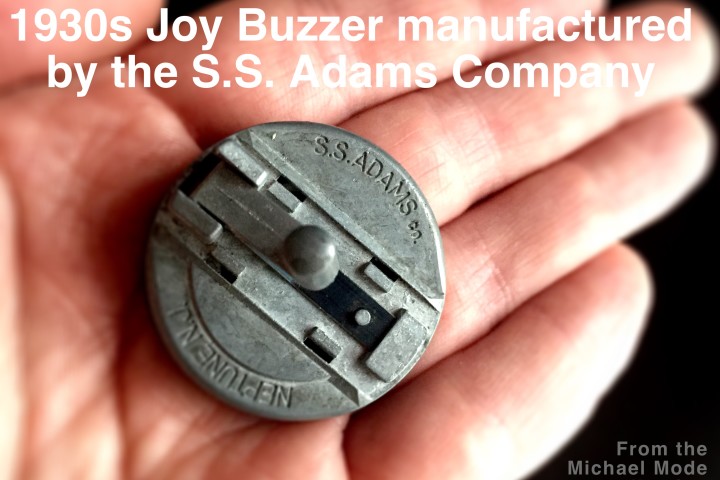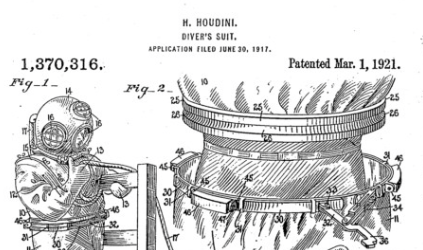From Creative
What Roles Did Thomas Edison & Henry Ford Have In The Detroit-Based Sanders Chocolate Company?
Happy 140th Birthday to my favorite chocolate company, Sanders. It was on this date in 1875 that Fred Sanders opened his first candy shop that later went on to sell ice cream and other treats. A Detroit-based business, Sanders was one of the first companies to use electric motors which were used to run the candy machines. These motors were built by the Edison Illuminating Company. The new technology proved to be troublesome for Fred Sanders who grew frustrated after the motors broke down. It was Thomas Edison who convinced Sanders to give the motors another try and sent in one of his best repairmen, a young employee named Henry Ford.
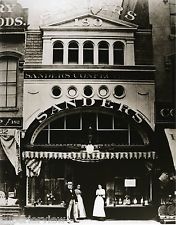
If you like ice cream soda, you can also thank Fred Sanders, who is often credited with inventing the delicious concoction. It was on a hot summer day that Sanders discovered the milk and cream in his shop had gone sour. Not wanting to disappoint his customers, he substituted ice cream and the now famous dessert drink was born!
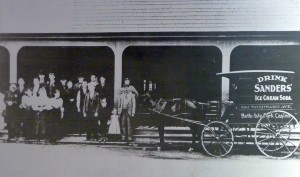
According to the Sanders website, Fred Sanders was also a visionary, owning one of the very first electric cars created in the early 1900s. Sanders would drive his family to his downtown Detroit candy shop in style but the vehicle would often not make it back home, becoming temperamental and only operating in reverse.
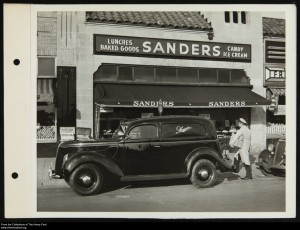
Not only does Sanders still make the best chocolates in the world, the history of the company is fascinating, with Fred Sanders, Thomas Edison and Henry Ford working together to innovate and help bring chocolates to the world!

Sanders famous chocolate Bumpy Cake

The Post-it Note was introduced 35 years ago today. Was it really invented by mistake?
“It’s like the conjurors – they do these tricks and they don’t tell you how they do them. Well, that proprietary knowledge is what makes businesses work.”
– Art Fry, inventor of the Post-it Note
A few years ago, I had the honor of meeting and talking with Art Fry, the inventor of the Post-it Note. I also had the pleasure of being invited to hear Mr. Fry give a talk on innovation. I thought the 35th anniversary of Art Fry’s famous invention, that debuted on April 6, 1980, would be a good time to share a few of the notes I took during his presentation, including Mr. Fry’s answer to whether or not the invention of the Post-it Note was an accident.
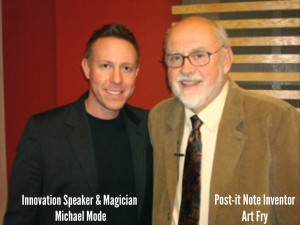
The audience learned about Mr. Fry’s career at 3M, a global company based in his hometown of St. Paul, Minnesota. Fry’s down to earth Midwest character charmed the group as he shared stories of his successful inventions and also humble recollections of ideas that failed.
Mr. Fry also talked about how 3M gives employees the freedom to spend 15% of their time experimenting with projects of their choosing. It was during that experimental time that Art Fry tinkered with the idea of creating a better bookmark that wouldn’t fall out of the hymnbook he used while singing in his church choir.
Art Fry on innovation… “Innovation becomes a survival mechanism when we can’t do things the same old way as we did them before.”
Art Fry talked about the importance of 3M encouraging participation in social groups as a way for employees to meet and talk about ideas. “These activities mix people from different parts of the company and allow them to discuss what they’re doing.” said Fry. It was on the golf course that Fry first learned of the tiny glue spheres created by 3M organic chemist Spencer Silver, PhD. Silver had developed the adhesive formula five years earlier and pitched it to different people in the company with no success. It wasn’t until that fateful day on the golf course that Art Fry learned of the innovative adhesive and thought it could be the solution for his bookmark.
Art Fry on researchers… “Half of their job is to come up with new things and the other half is to turn around and tell others about it. Because what good is it to discover new things if people can’t make use of it?”
Many stories have been written claiming the Post-it Note was invented by mistake. Here’s the real answer that Art Fry shared with the group during his talk…
“It wasn’t an accident. It was a classic thing in research…coming up with a new material… and then I found an application for it. If you had planned a trip, a vacation to go to someplace you haven’t been before and you see something you haven’t seen, it isn’t an accident that you saw it. Because you would’ve done all the preparation to make it happen. This was the case with us. We sailed into unchartered waters and discovered new things.”
The Post-it Note was born in the same division as 3M’s Magic Tape. When Art Fry first showed his new invention to coworkers, he said they called the pieces of paper “stupid and frivolous” and saw no market for them. Fry believed in his idea and started handing out samples to family and friends. When people started asking for more, he knew he was onto something. He kept track of how many pads people were using and calculated that the same people who used only one roll of Magic Tape in a year had used 20 pads of his Post-it Notes.
When recalling the early test days with 3M handing out free samples of the sticky notes in Boise, Idaho, Fry mentioned that, “10 sheet samples led to complete addiction.” Within a few weeks, the pads of paper had a remarkable acceptance rate with 95% of the people who received free samples indicating they would purchase more.
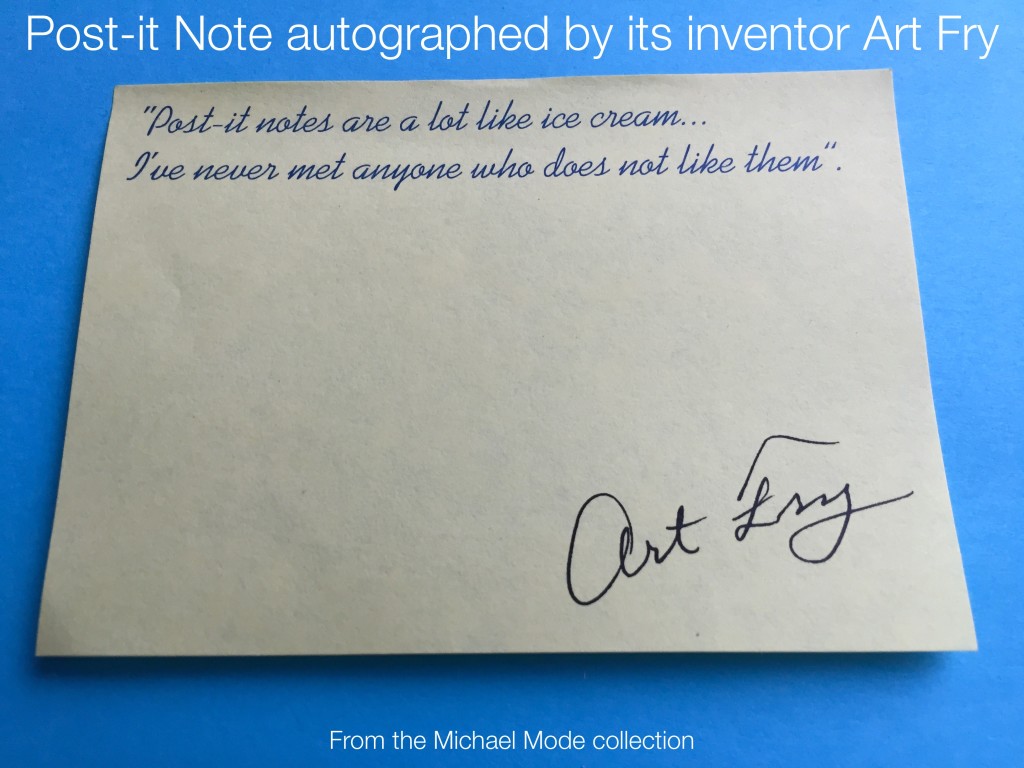
Art Fry on the importance of proprietary information…
“When you go to school… and your learning curve is very steep… and you think that everything you want to know is in those textbooks or on Google. Well, you get out and you go to work and you find out there’s a whole wealth of knowledge that people aren’t talking about. It’s like the conjurors… they do these tricks and they don’t tell you how they do them. Well, that proprietary knowledge is what makes businesses work. Knowing how to do things that other people can’t do themselves.”
The original color of the Post-it Note wasn’t designed, it was chosen by accident, when the lab next door had only had yellow scrap paper available. Over the years, countless colors, shapes and applications of the original Post-it Note have been marketed, generating billions of dollars in sales for 3M.
Did Art Fry get a percentage of all those sales? Here’s what he said when asked that very question, “No. I worked on a lot of projects that failed and they still paid me. Plus, I got to work with people who were the best in the world… where there was always something going on and it was so very exciting. And if they had given me a royalty, I would’ve had to spend an awful lot of time trying to figure out how to spend all of that money.” Fry laughed as he said, “So, they took care of that problem for me!” When Fry retired, 3M did buy him a new boat, because Fry loves to spend time fishing for Walleye in the lakes of Minnesota.
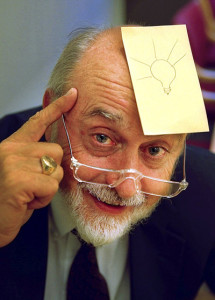
“You’re all capable of doing amazing things… and I hope you get a chance to in your life.” – Art Fry
Michael Mode is a speaker, magician and innovation consultant who teaches companies how to Think Like a Magician to solve challenges they feel might be impossible.
8 April Fools’ Day Jokes – You Won’t Believe #3
The tradition of playing practical jokes on April Fools’ Day goes back hundreds of years. The origins of the holiday are unclear, but it’s celebrated by pranksters all around the world.
Two longtime U.S. companies, S.S. Adams Co. and Fun Inc. can be credited with the invention and manufacturing of many legendary gags that have been used by generations of jokesters. Both companies are still operating today and several of their best sellers are featured below.
1. Cachoo/Kerchoo Sneezing Powder -The S.S. Adams Company in Neptune, New Jersey was created by Soren (Sam) Sorenson (more popularly known as S.S. Adams) who has been called the Edison of Practical Jokes and the Ford of Foolery for having created of over 600 pranks, many of which received patents. Adams’ first product, Cachoo Sneezing Powder originated after an accidental discovery in 1905 while working as a salesman for a dye company. Adams noticed one of the coal-tar derivatives from the dye was causing co-workers to sneeze. Being an entrepreneur, Adams packaged the powder and started selling it for 10 cents a bottle. Adams sold more than 150,000 bottles of Cachoo Sneezing Powder in the first year alone. The gag caused a sensation around America, leading to disruptions in churches, schools and theaters. In 1908, Cachoo caused chaos at political conventions around the nation after one retailer in Philadelphia sold 70,000 vials of the sneezing powder. Years later, the main ingredient in sneezing powder was replaced with finely ground pepper after the FDA banned the original ingredient, Dianisidine, which was also used in chemical weapons.
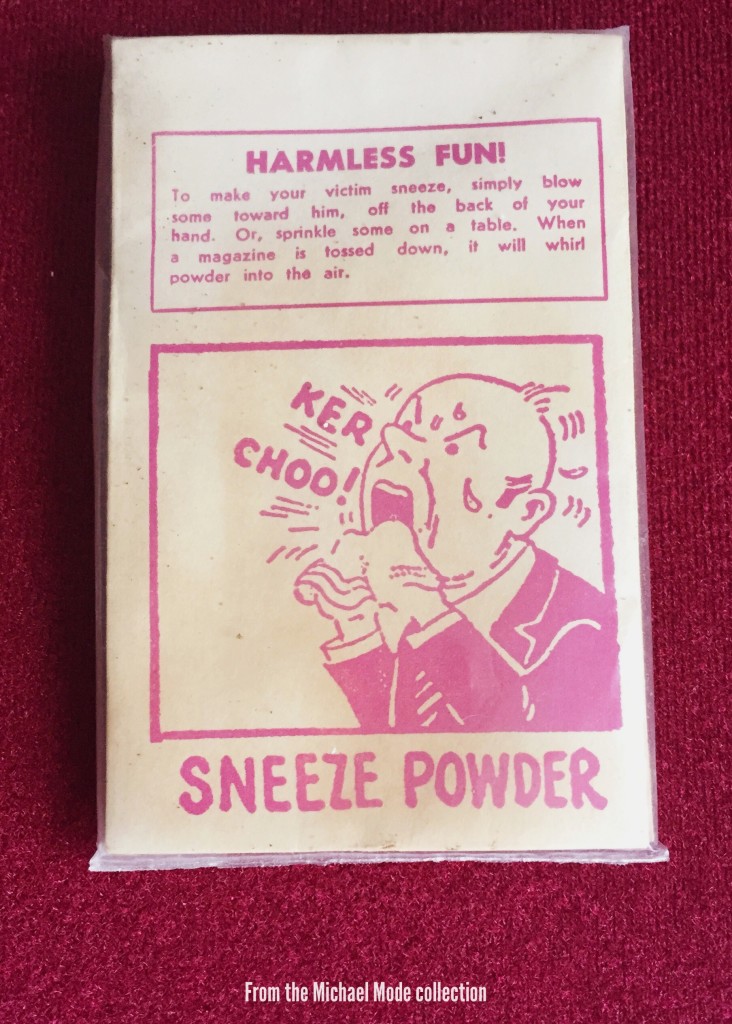
2. Joy Buzzer A 1931 patent granted to S.S. Adams for his now classic Joy Buzzer which was built with a German steel winding mechanism that rapidly uncoiled and startled the unknowing hand shaker with a vibration that felt similar to a shock. The rapid success of the Joy Buzzer allowed Adams to grow his company, moving to a larger building and hiring additional employees. This was a particularly impressive business success since it happened during the Great Depression. Adams released several of his products at the perfect time, when people were looking for a cheap laugh and way to relieve stress during the tough economic times.
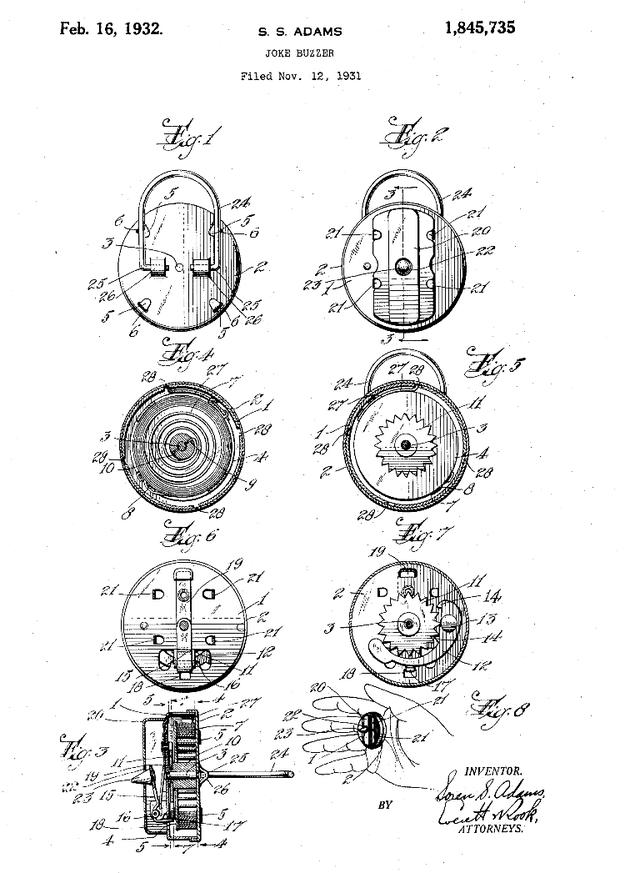
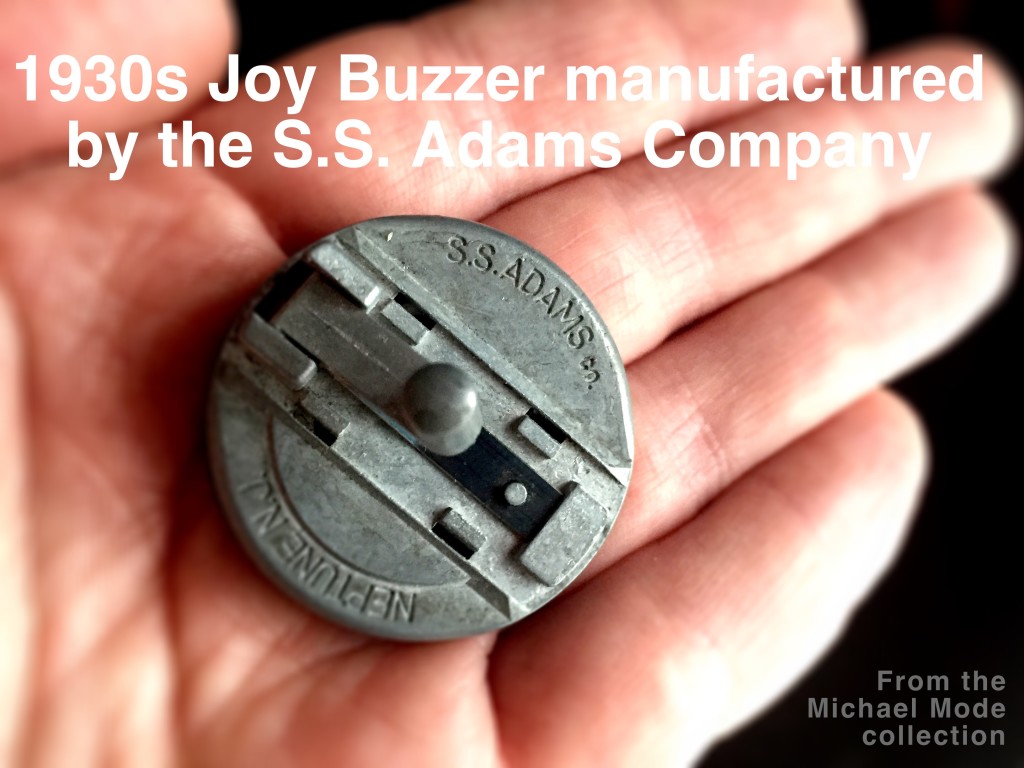
3. Auto Burglar Alarm – These days it’s hard to imagine a product like this ever existed. The Auto Burglar Alarm by S.S. Adams allowed you to secretly attach this explosive device under the hood of a car. When your “friend” turned the key in the ignition, the car battery set off the practical joke, producing a loud explosion and cloud of smoke from under the hood of the automobile.
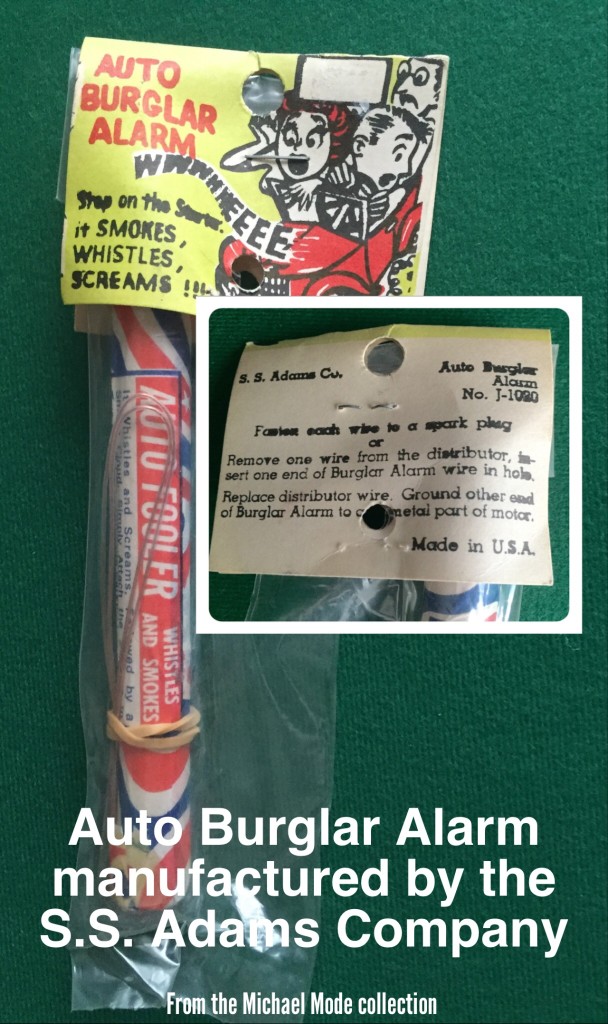
4. Chatter Teeth – In 1949, U.S. Patent 2,504,679 was granted to the H. Fishlove & Co. in Chicago, Illinois for the design of a set of plastic teeth that would rapidly chatter after being wound with a steel coil mechanism. H. Fishlike & Co. was purchased by Fun Inc. which is still being operated by the David, Kathy and Andrew Michals. In addition to manufacturing fine novelty items, Fun Inc. is also the largest manufacturer of magic tricks in the United States.
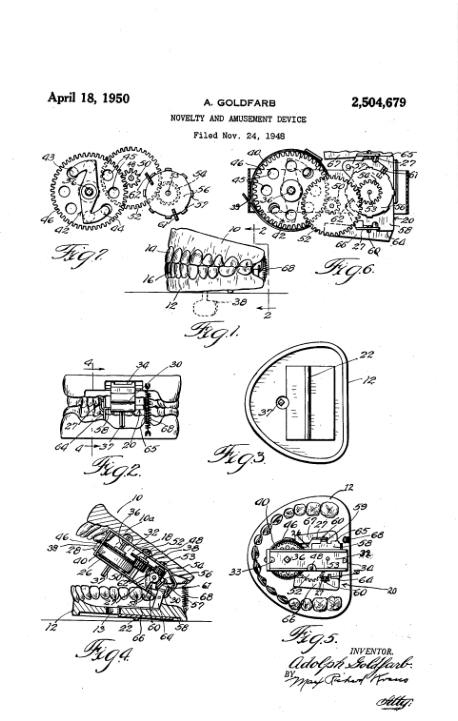
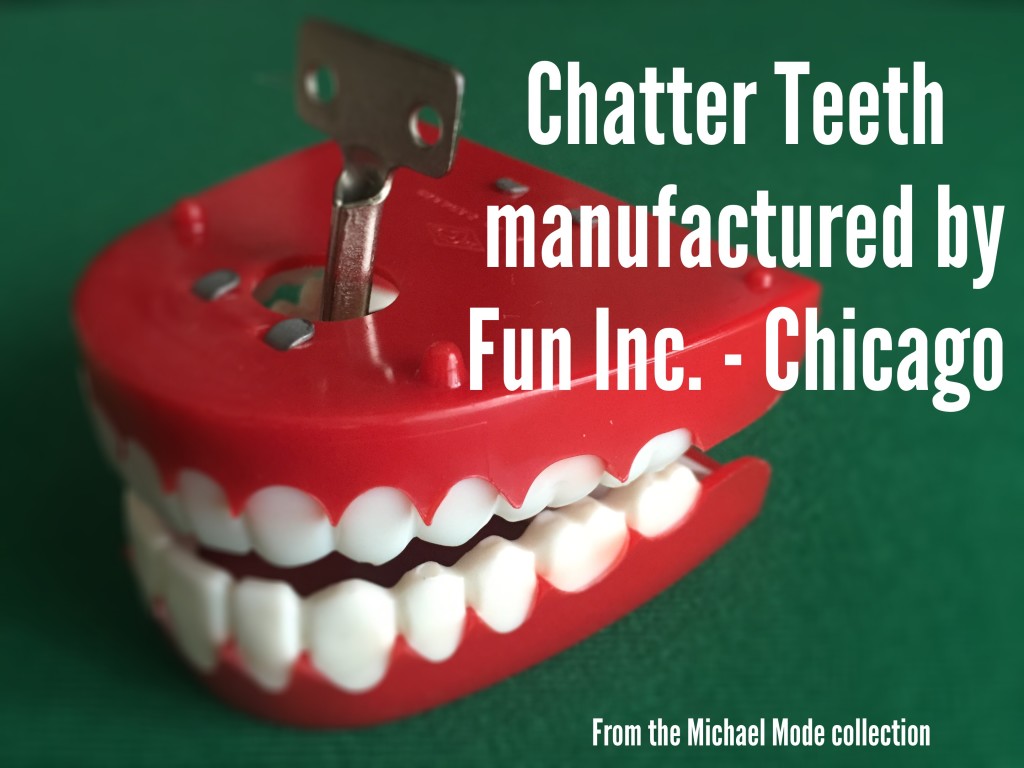
5. Snake Can – On March 28, 1933, S.S. Adams received US Patent # 1,903,082 for his Snake Can that he invented a decade and a half earlier. When the lid was opened, a cloth covered metal spring that resembled a snake would “jump” out of the can. Millions of snake cans/jars have been sold over the years in different varieties, including marshmallows, peanut brittle, jam, mints and facial cold cream. In the 1990s, Adams’ grandson updated the gag with a snake potato chip can.
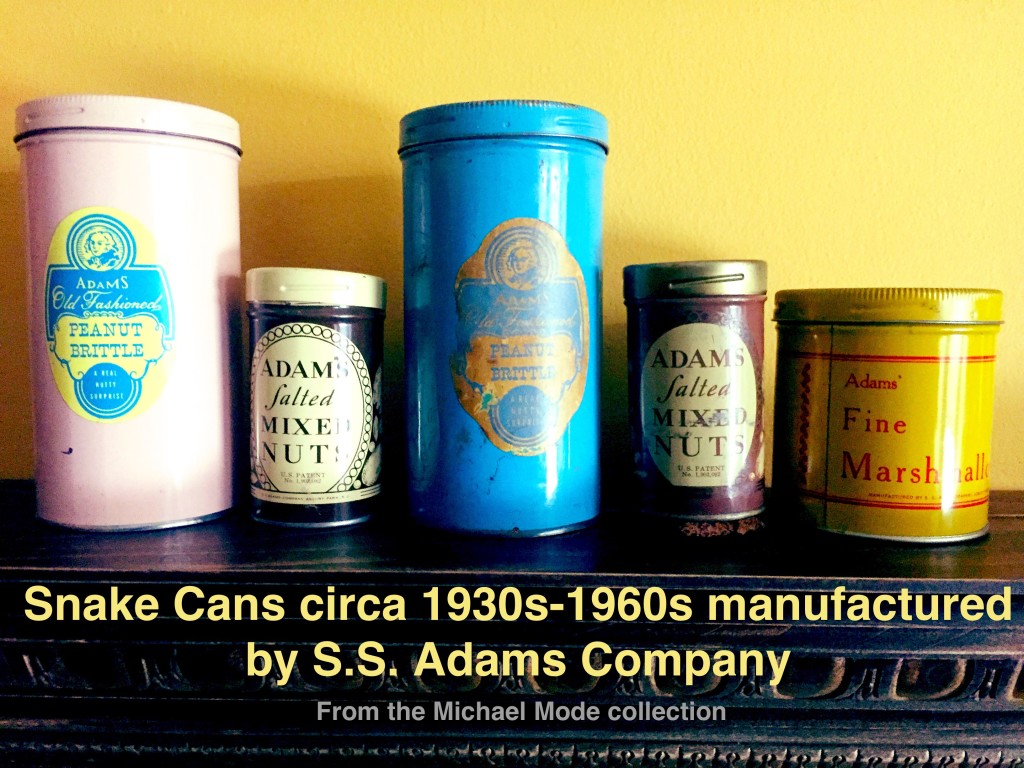
6. Dribble Glass – One of the many classic practical jokes invented by S.S. Adams. The Dribble Glass has small holes cut into the design on the side of the glass causing liquid to pour out onto the shirt or dress of your victim. Even funnier with red wine, right?
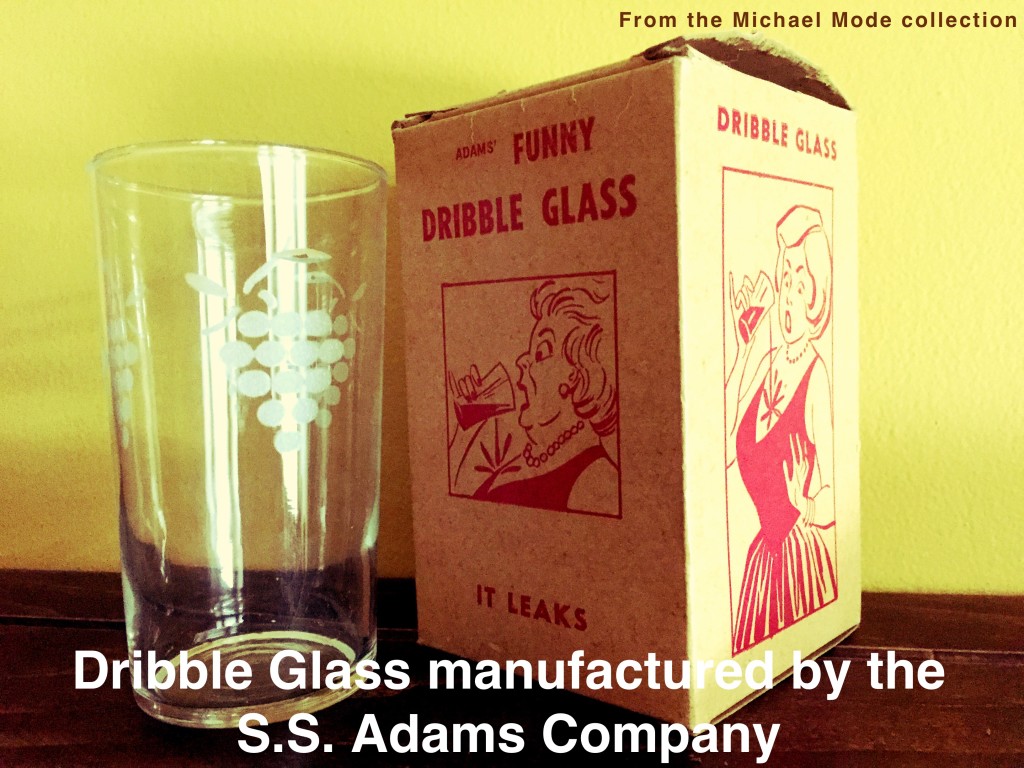
7. WHOOPS – In the 1950s, Chicago based Fishlove & Co. was the premier joke and gag manufacturer. When one of their designers invented the concept of fake vomit, he had a hard time selling the idea to others because they thought it was too gross. When people started seeing the hilarious reactions, it became a huge seller. Fun Inc. in Chicago still manufacture WHOOPS with a secret formula that has been perfected over half a century. In 2015, Andrew Michals of Fun Inc. released an updated version of the gag with Zombie WHOOPS. As the Fun Inc. website states, “it’s 30% larger than the original and green in color.”
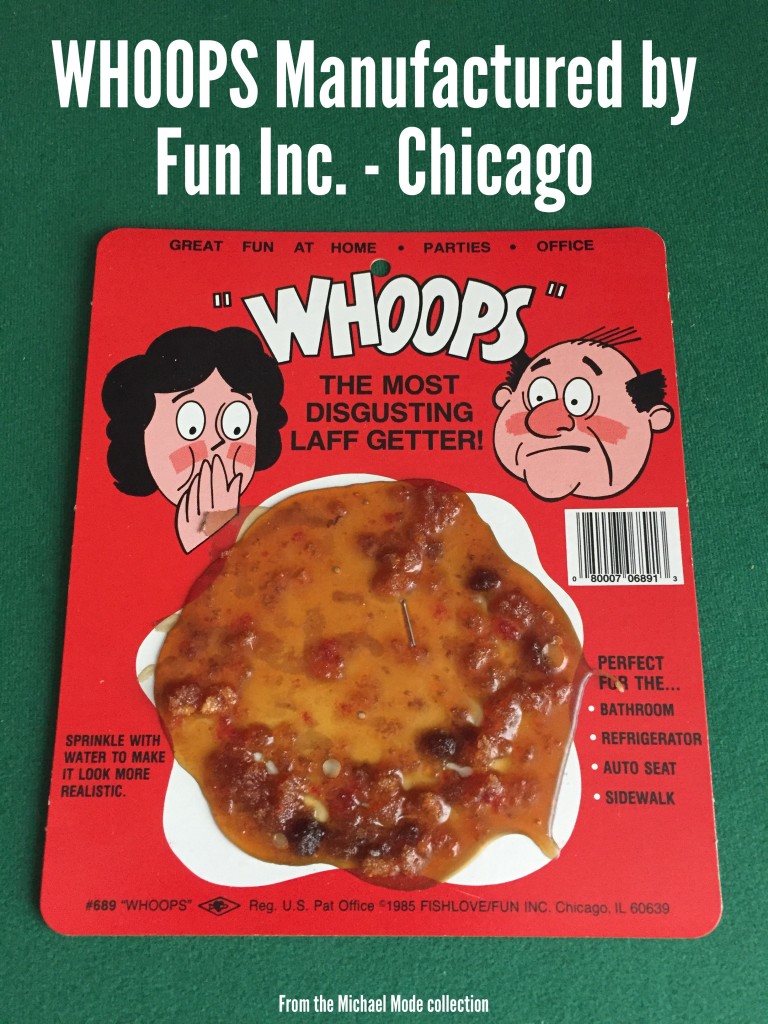
8. Finger Snapping Gags – Similar to a mouse trap in construction, finger snapping gags have long been popular practical jokes. When the person pulls out a stick of gum or other sliding device, a spring loaded metal bar on the underside smacks down on their finger with a stinging “snap.” The gags pictured on the ends in the photo below are from unknown Japanese manufacturers, circa 1930s. The snapping gum in the middle of the photo is the most popular variation of the gag.
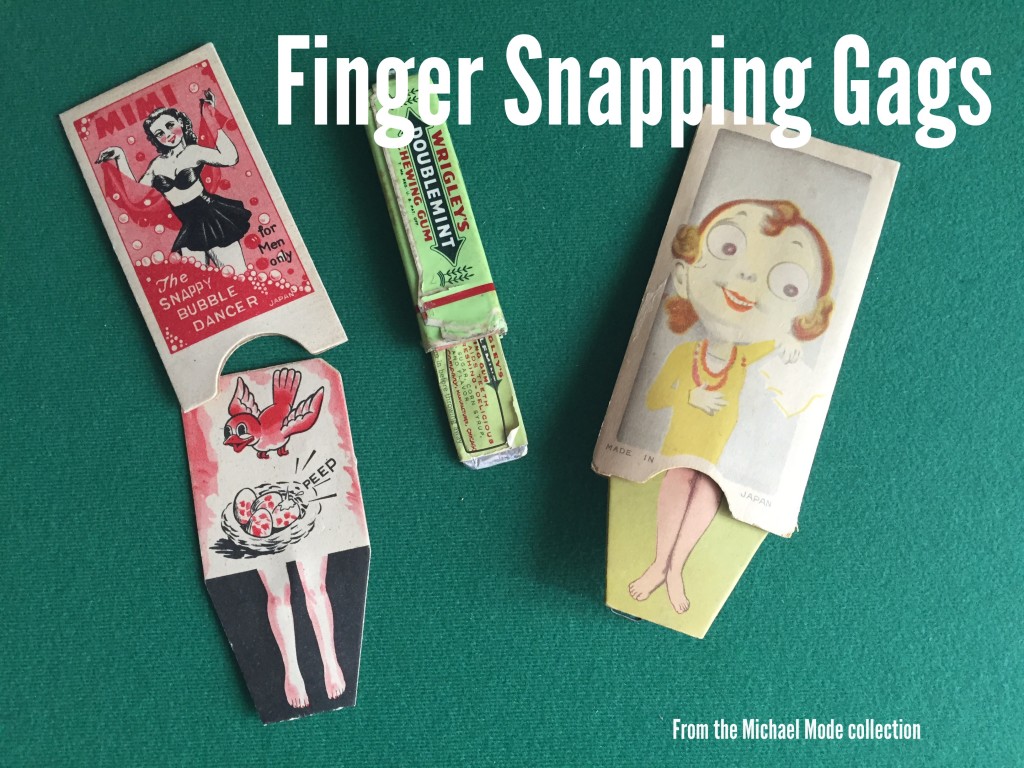
What You Probably Didn’t Know About Houdini
Harry Houdini’s name is synonymous with escapes, but you probably didn’t know the master showman was also recognized as an inventor. Today is the 94th anniversary of Houdini receiving his first and most notable patent. On March 1, 1921, the United States Patent and Trademark Office issued Houdini a patent for a diving suit that he created. The suit could split apart in the middle, allowing for a quick underwater escape if a diver got into a dangerous situation. Houdini was an expert at freeing himself from difficult situations and called upon his experience with underwater near-death escapes when designing his invention.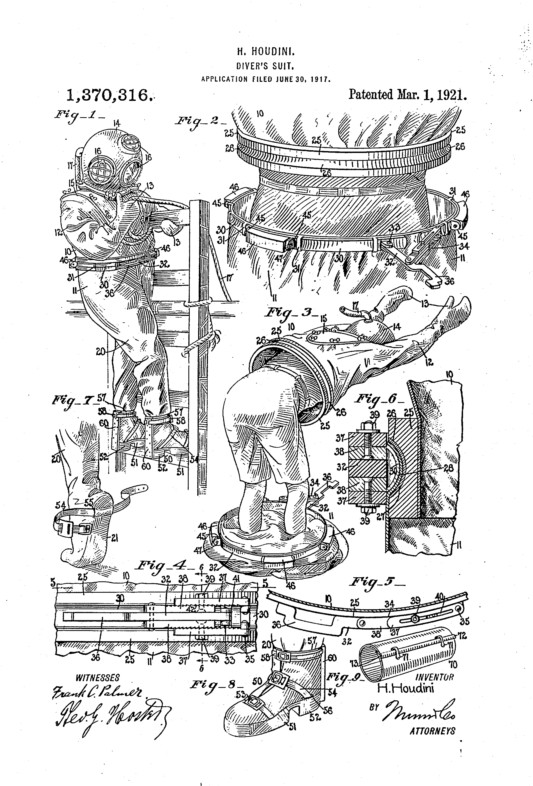
Houdini is just one of the dozens of magicians who have been issued patents for non-magic inventions. Magic is all about problem solving and making something that seems impossible a reality. More and more companies are now realizing that Thinking Like a Magician and using a Magic Mindset can lead to new ways of thinking and innovative solutions.
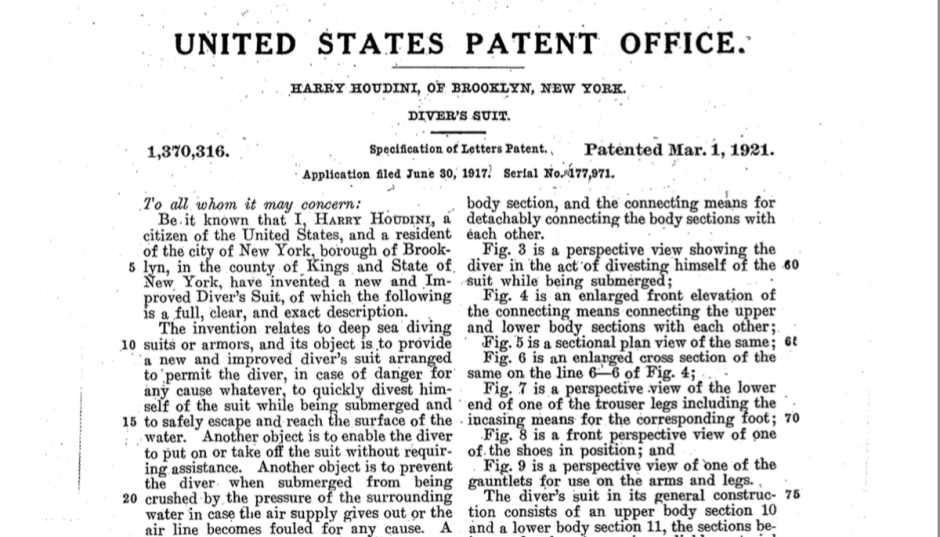
In addition to magic and escapes, Houdini was also an expert at outsmarting his competition. As Houdini’s fame grew, countless imitators tried copying his act to ride on the coat tails of his success. Houdini stayed in the lead by continuing to innovate and develop headline generating stunts that drew record crowds around the world. Houdini’s name remains just as popular today as it was in 1926 when he died on Halloween night in Detroit, Michigan.
It was Houdini’s ability to innovate that created and sustained his legendary success. As Houdini himself alluded, his way of thinking was the real secret to his escapes:
“My brain is the key that sets me free.” – Harry Houdini
